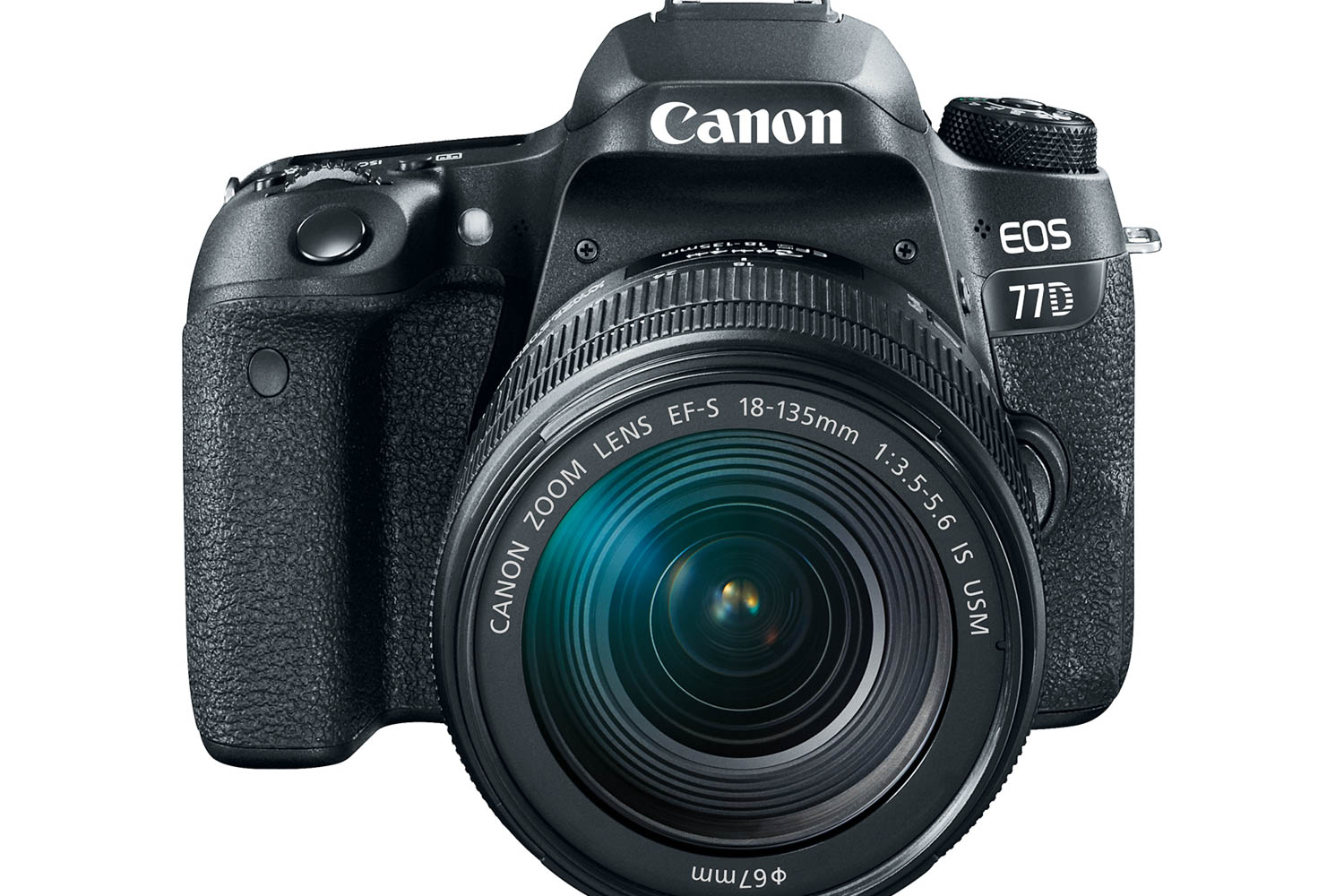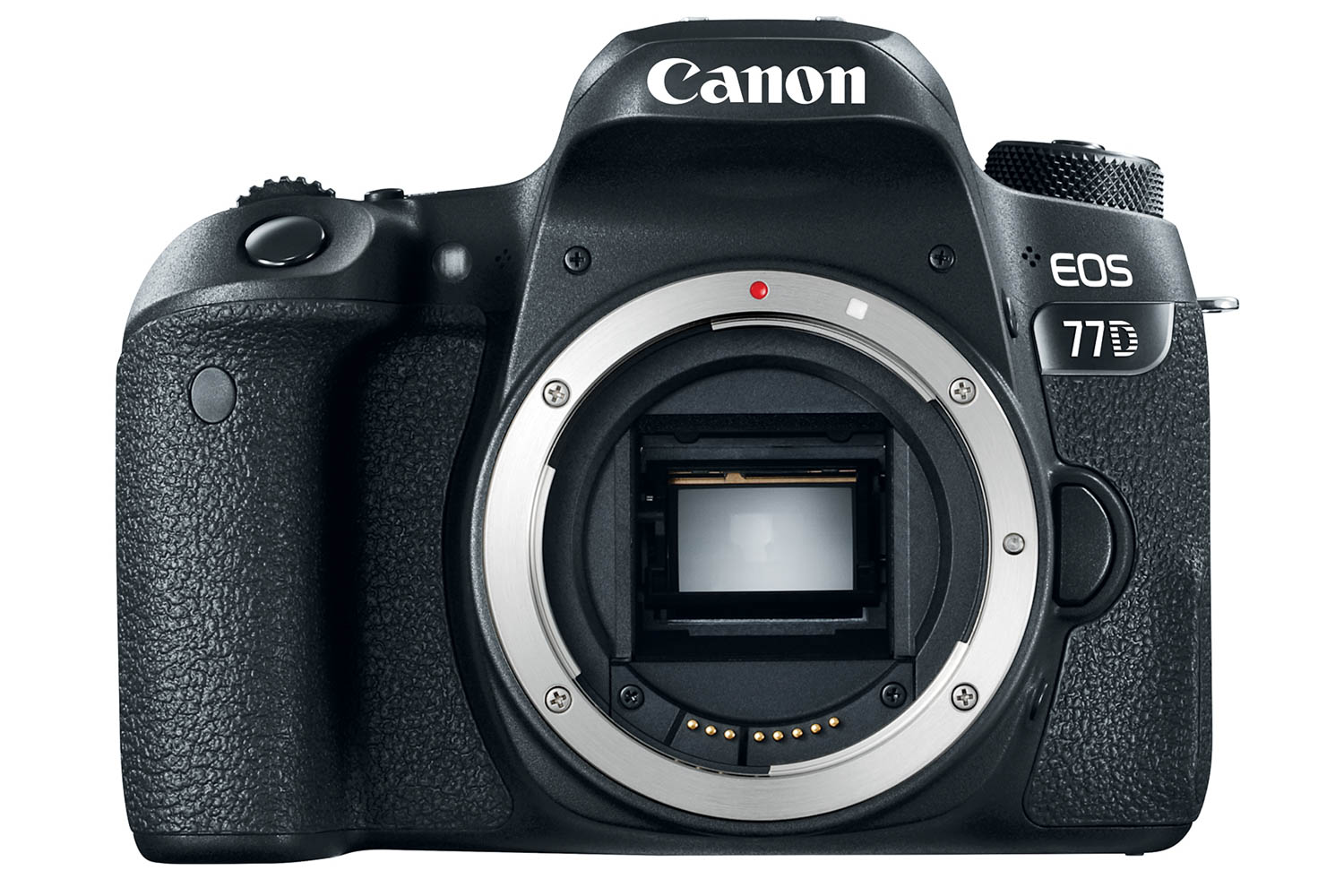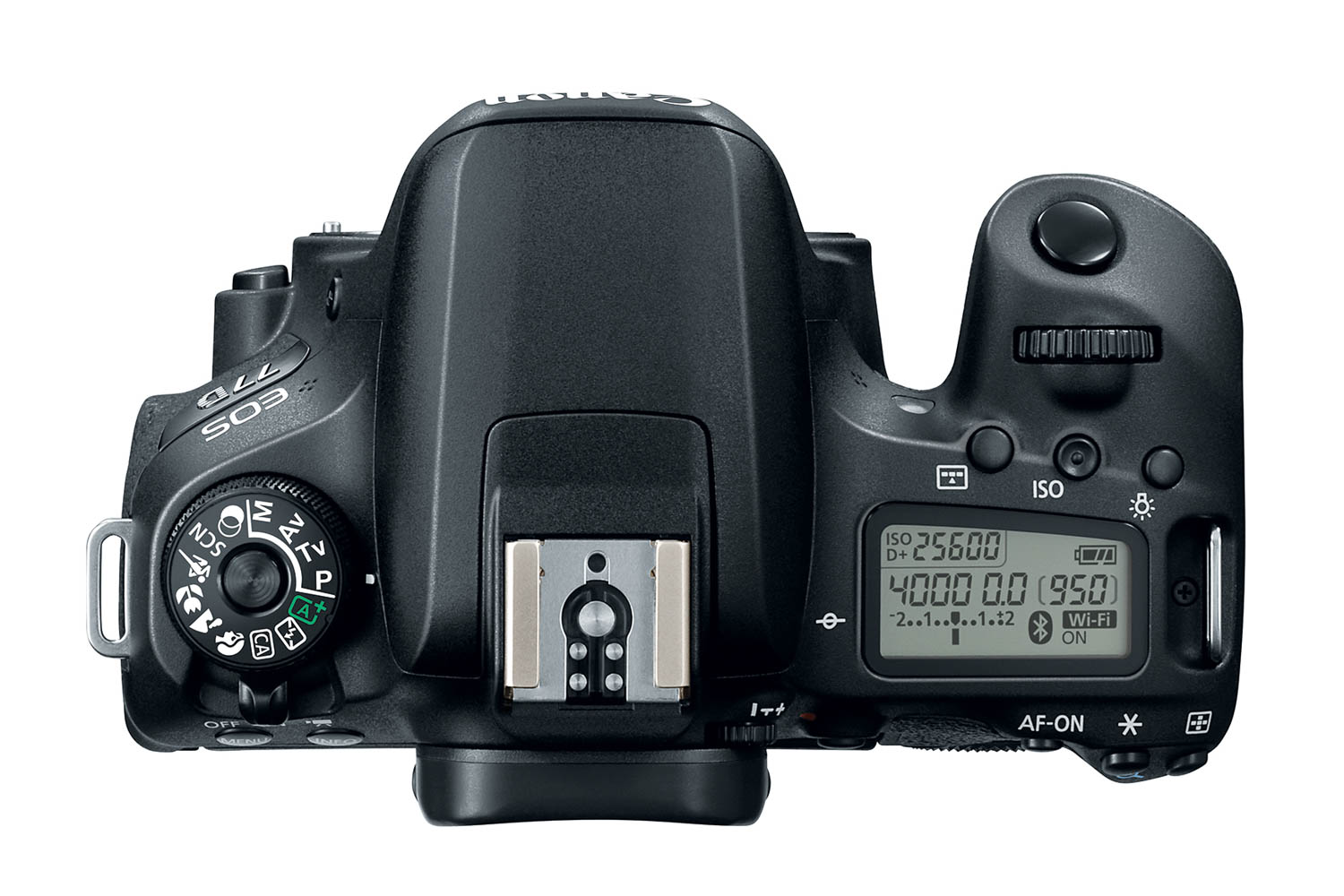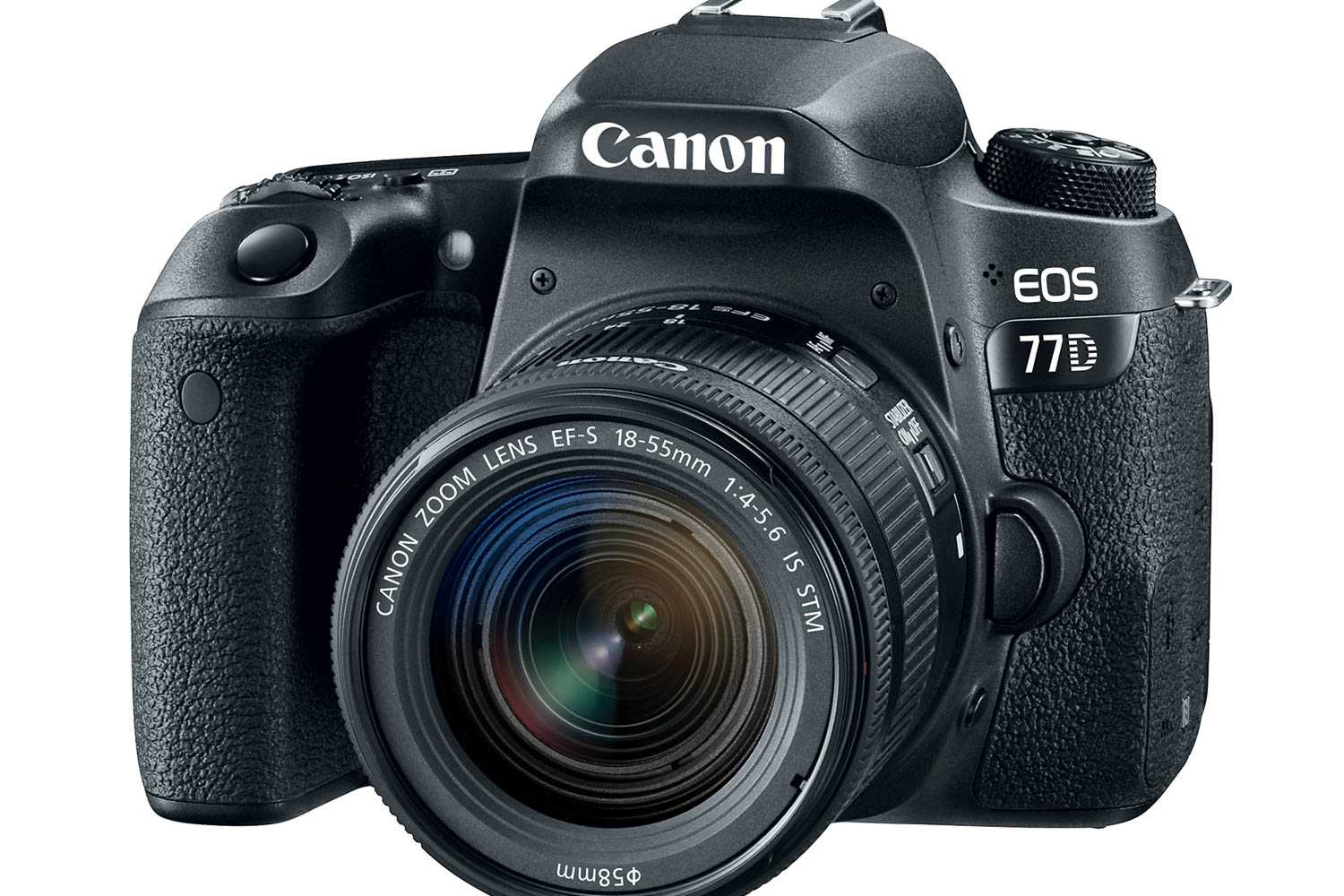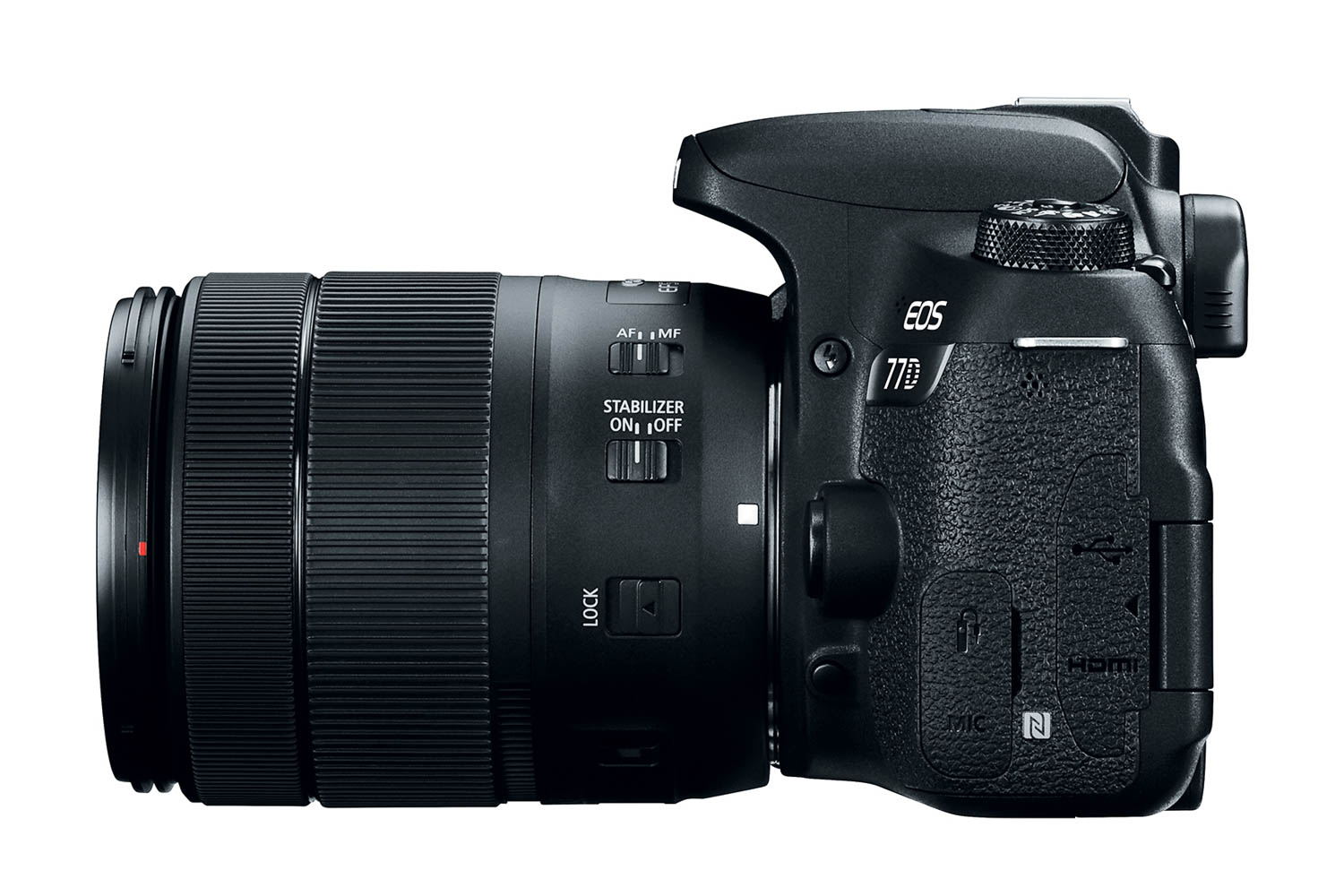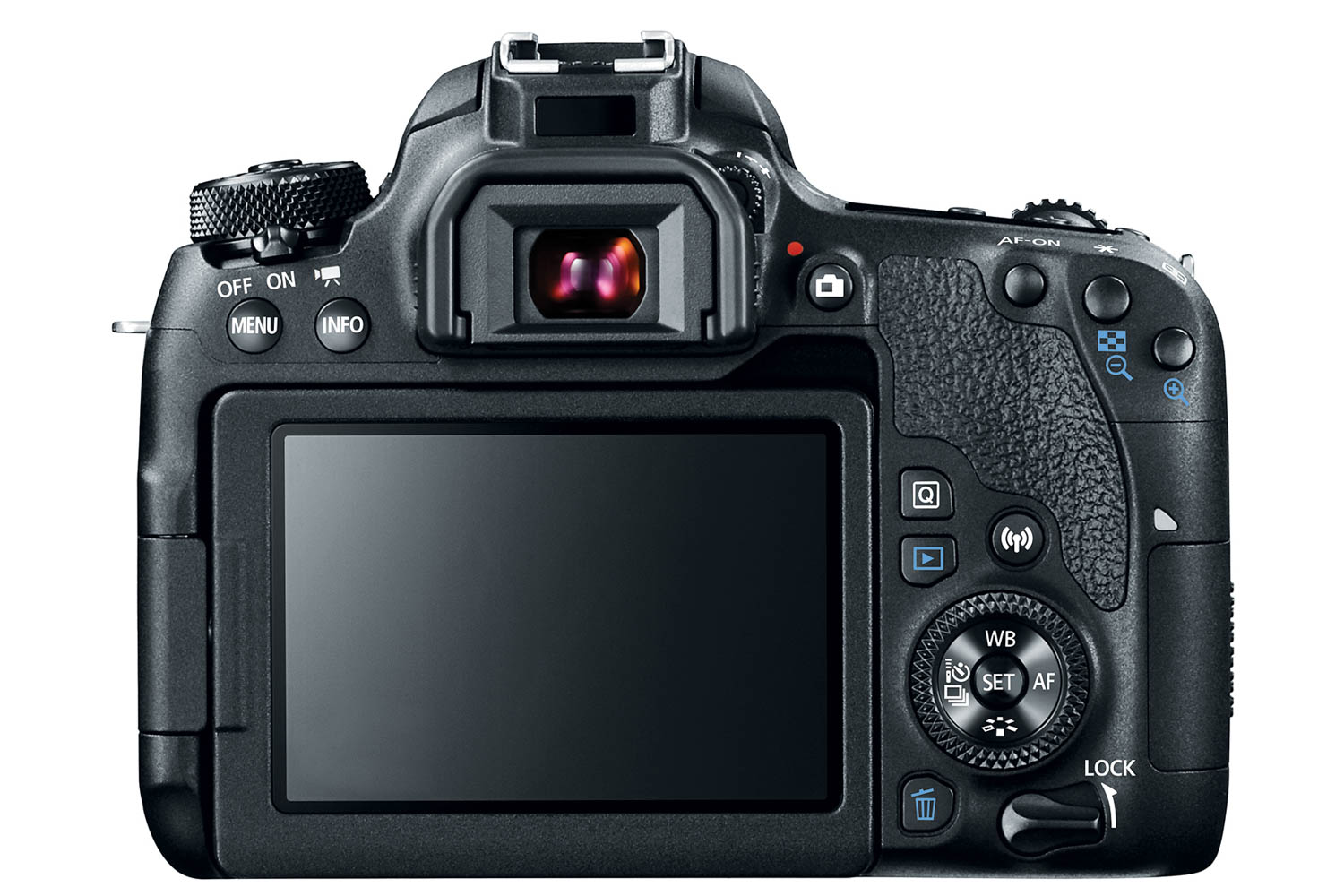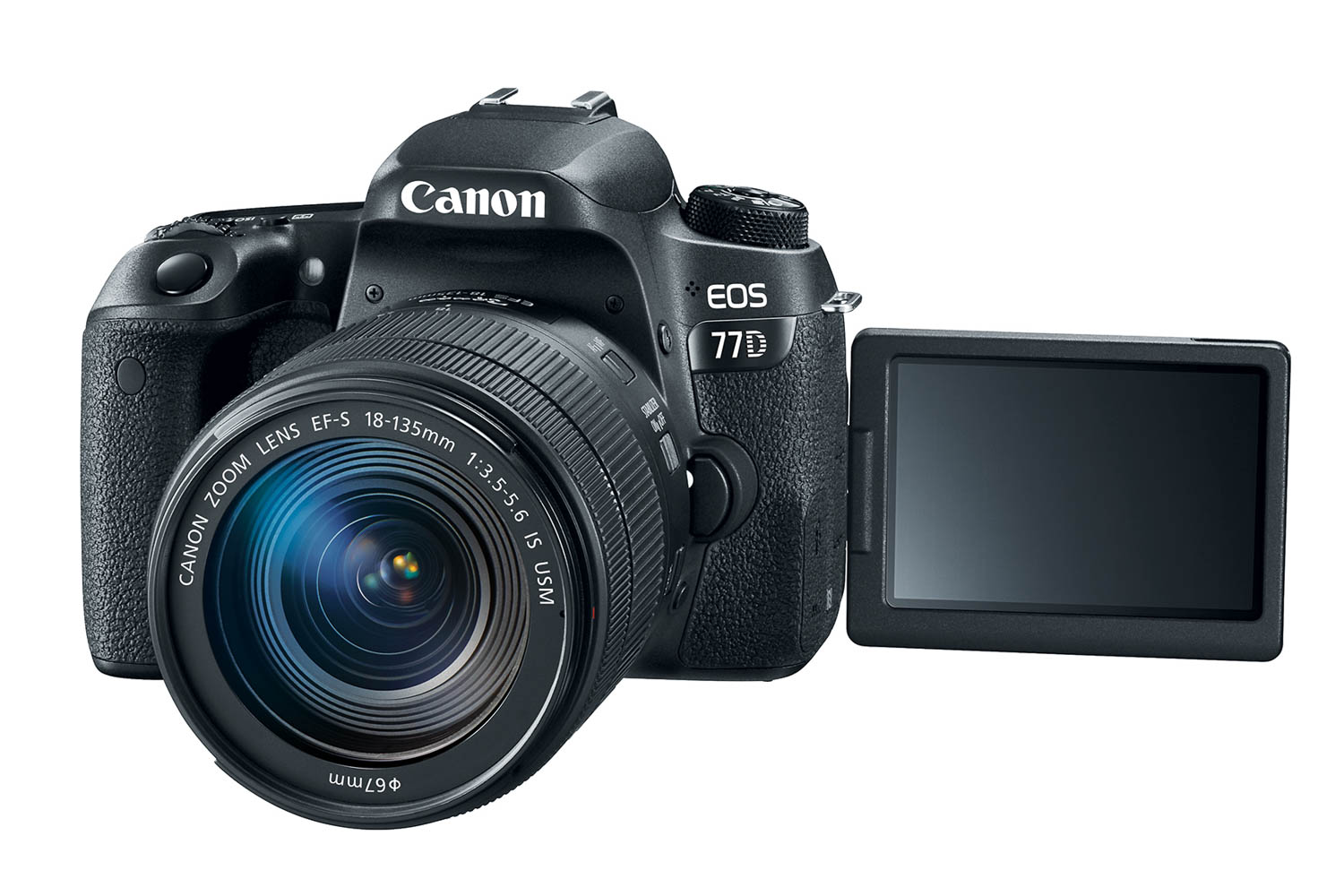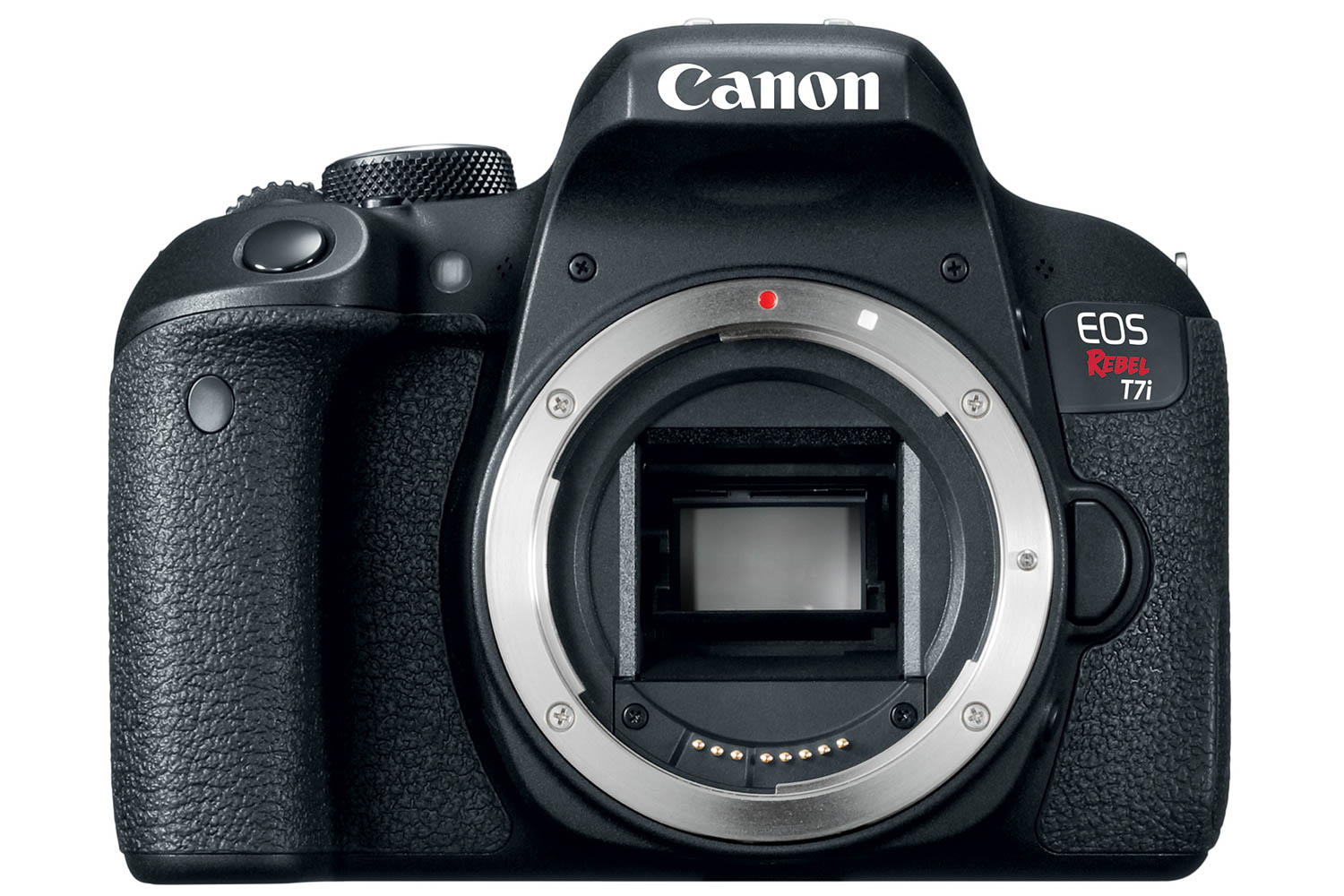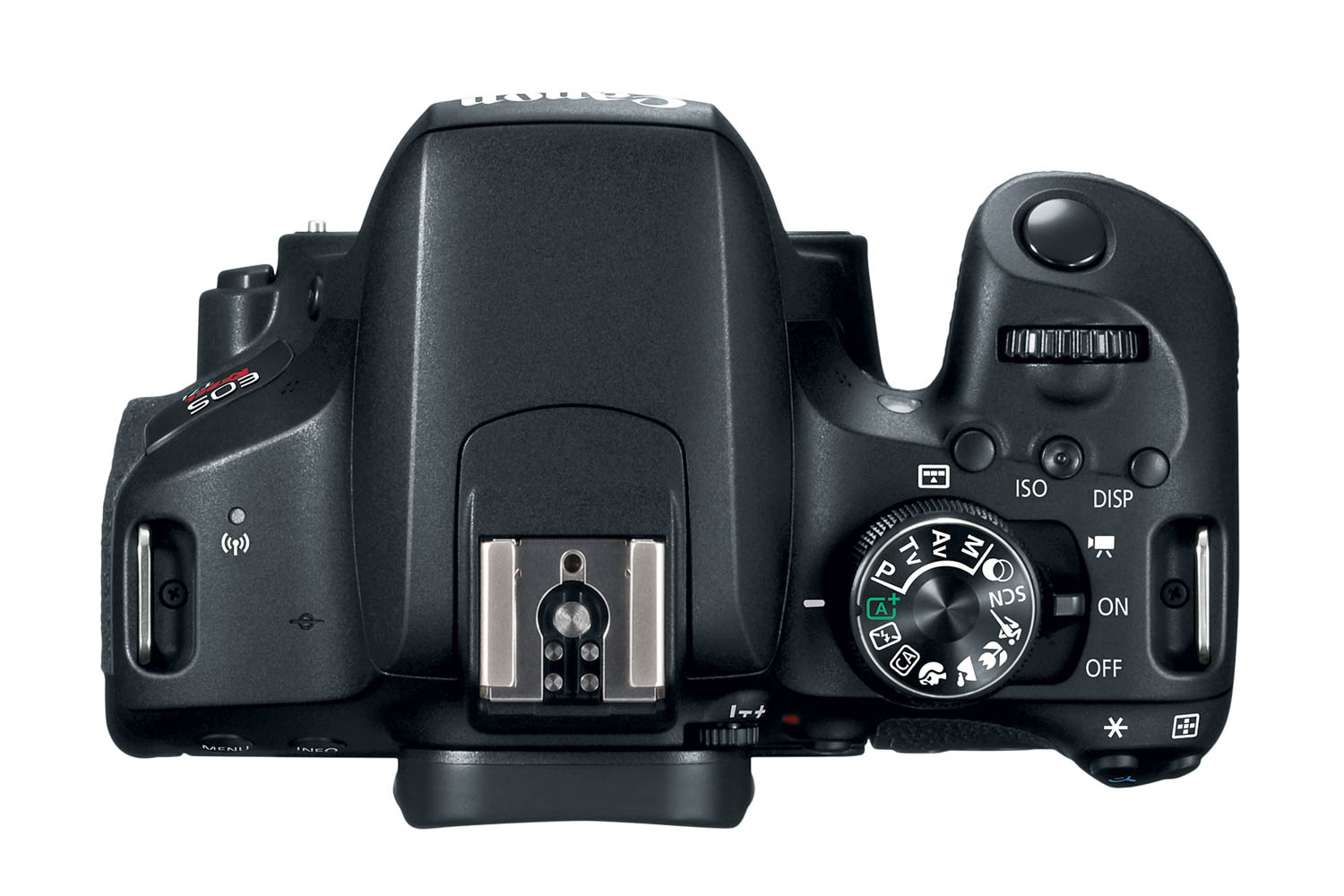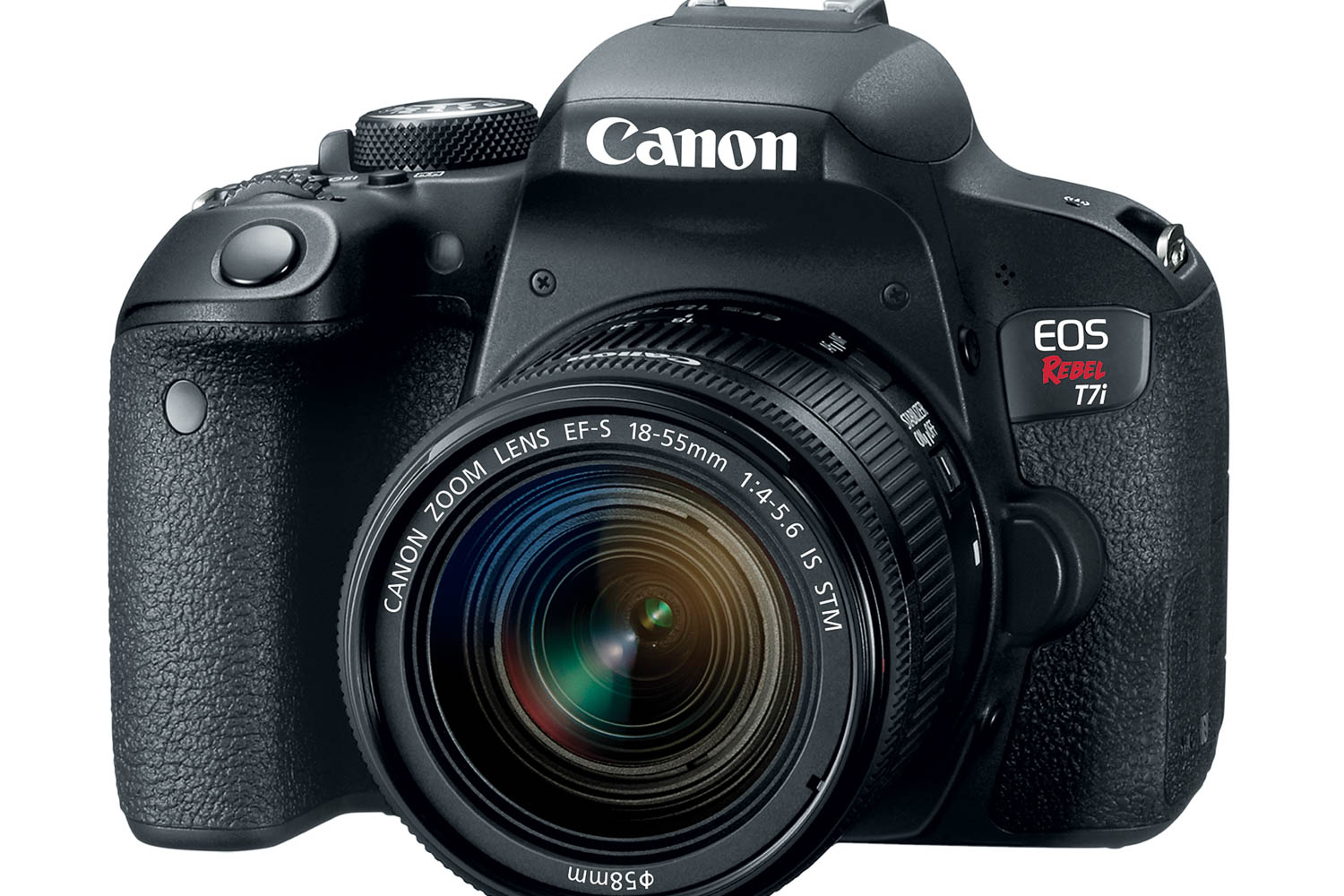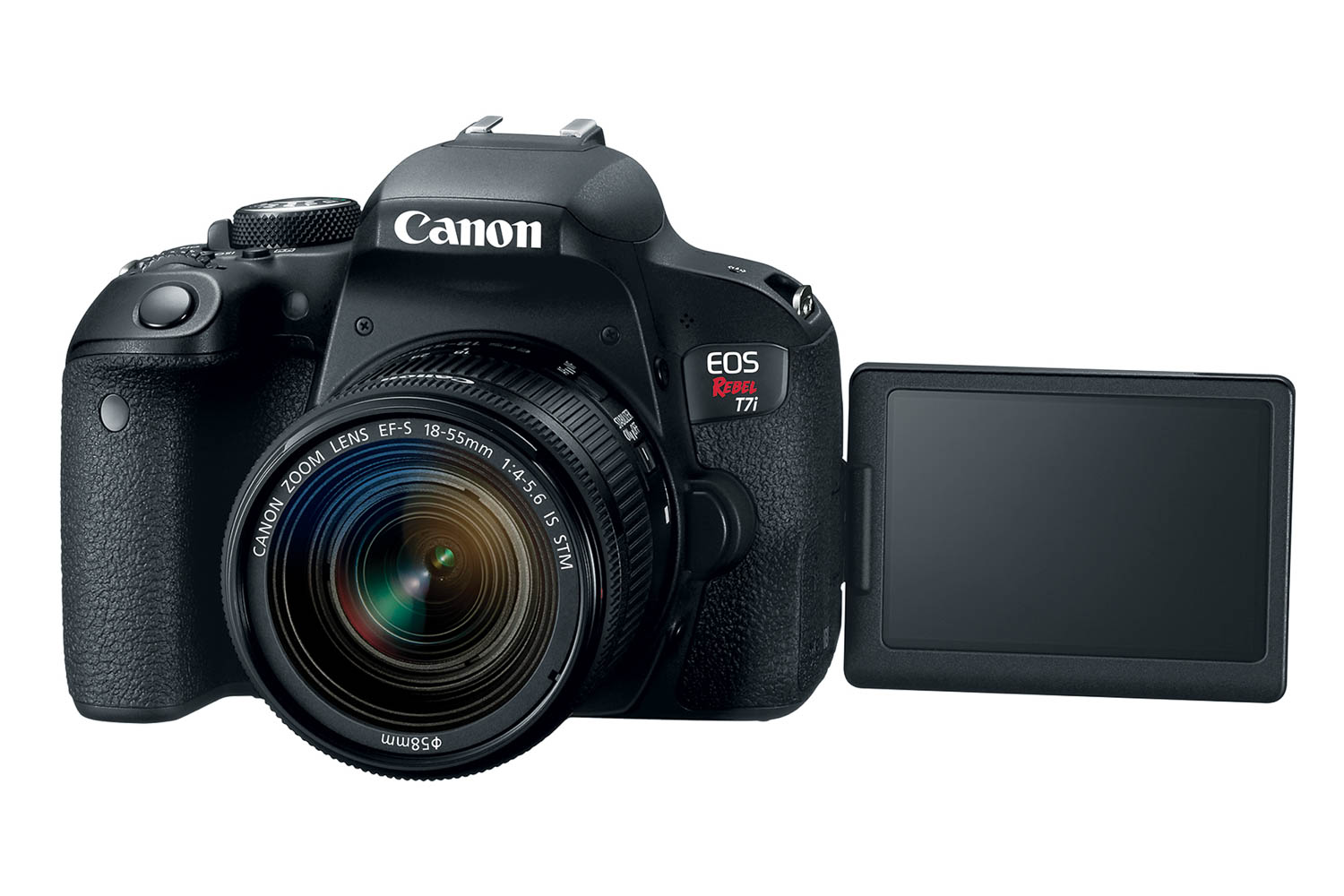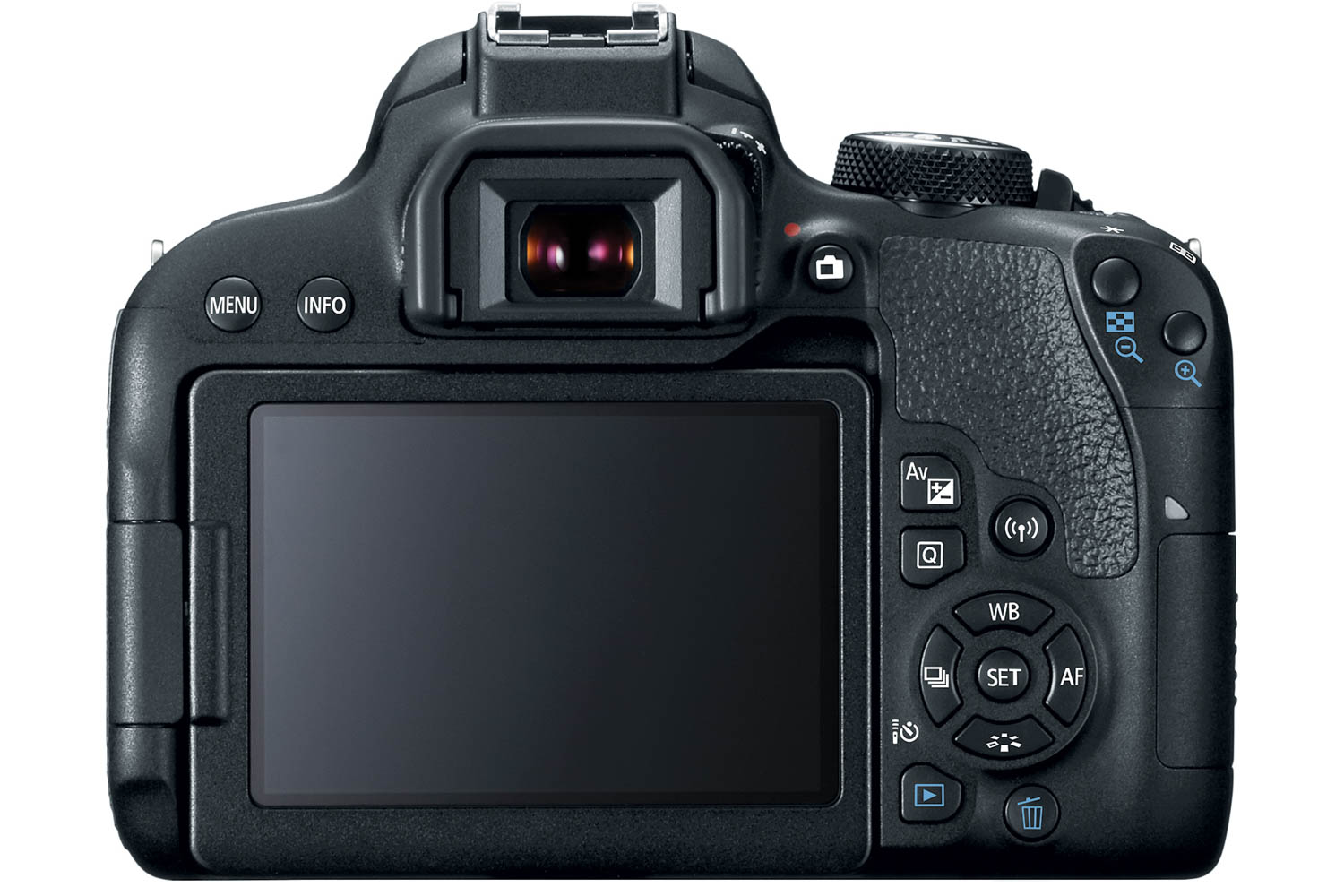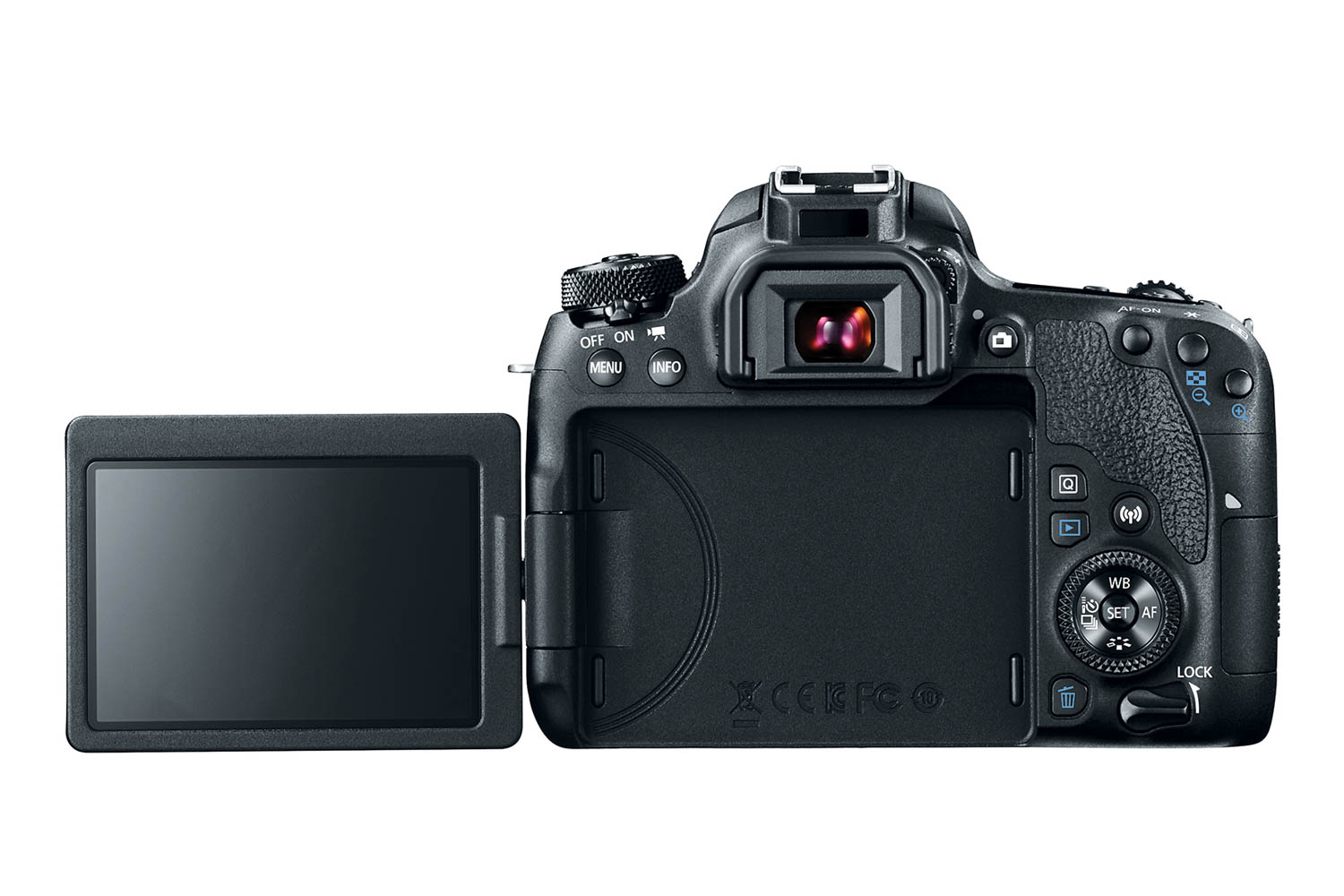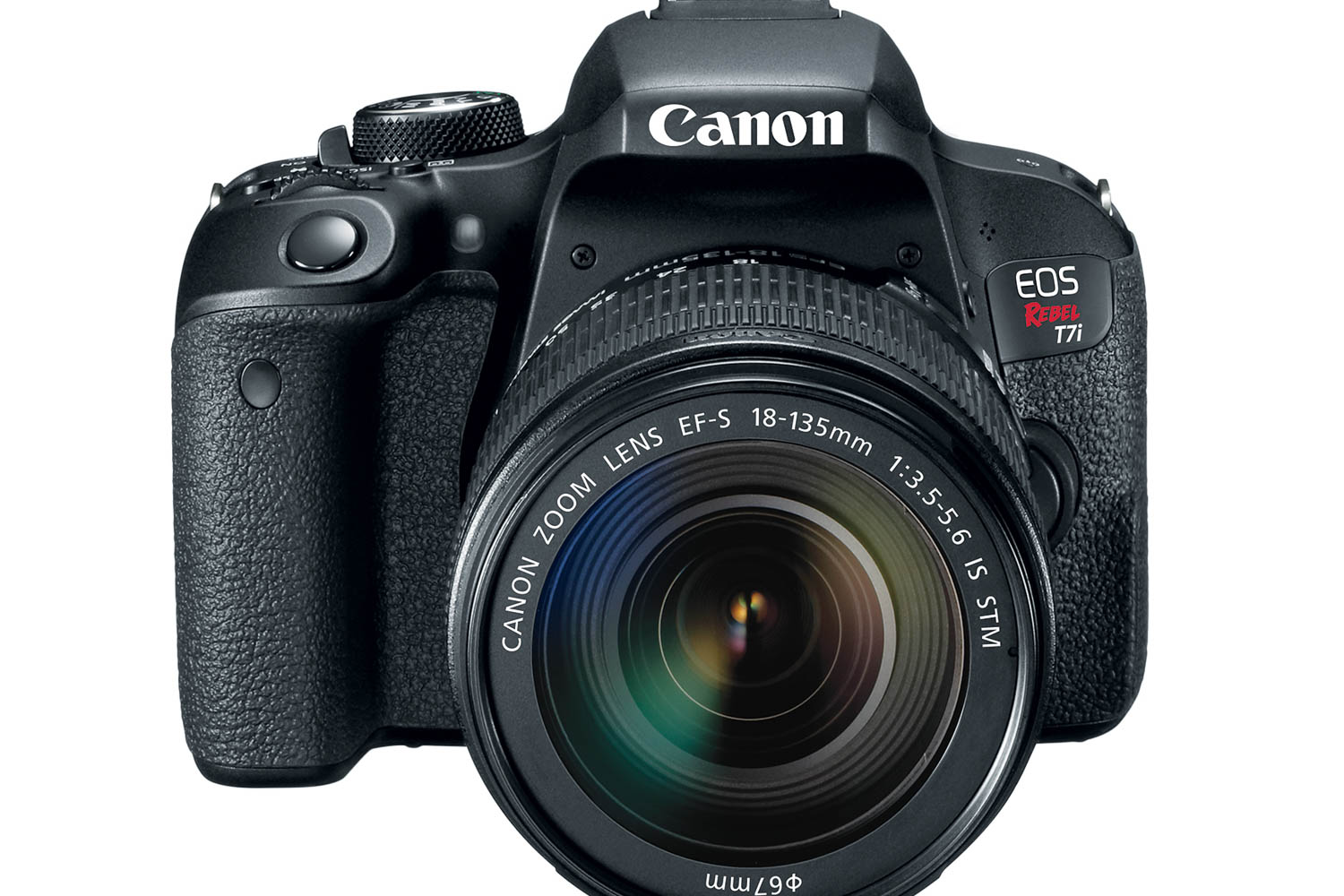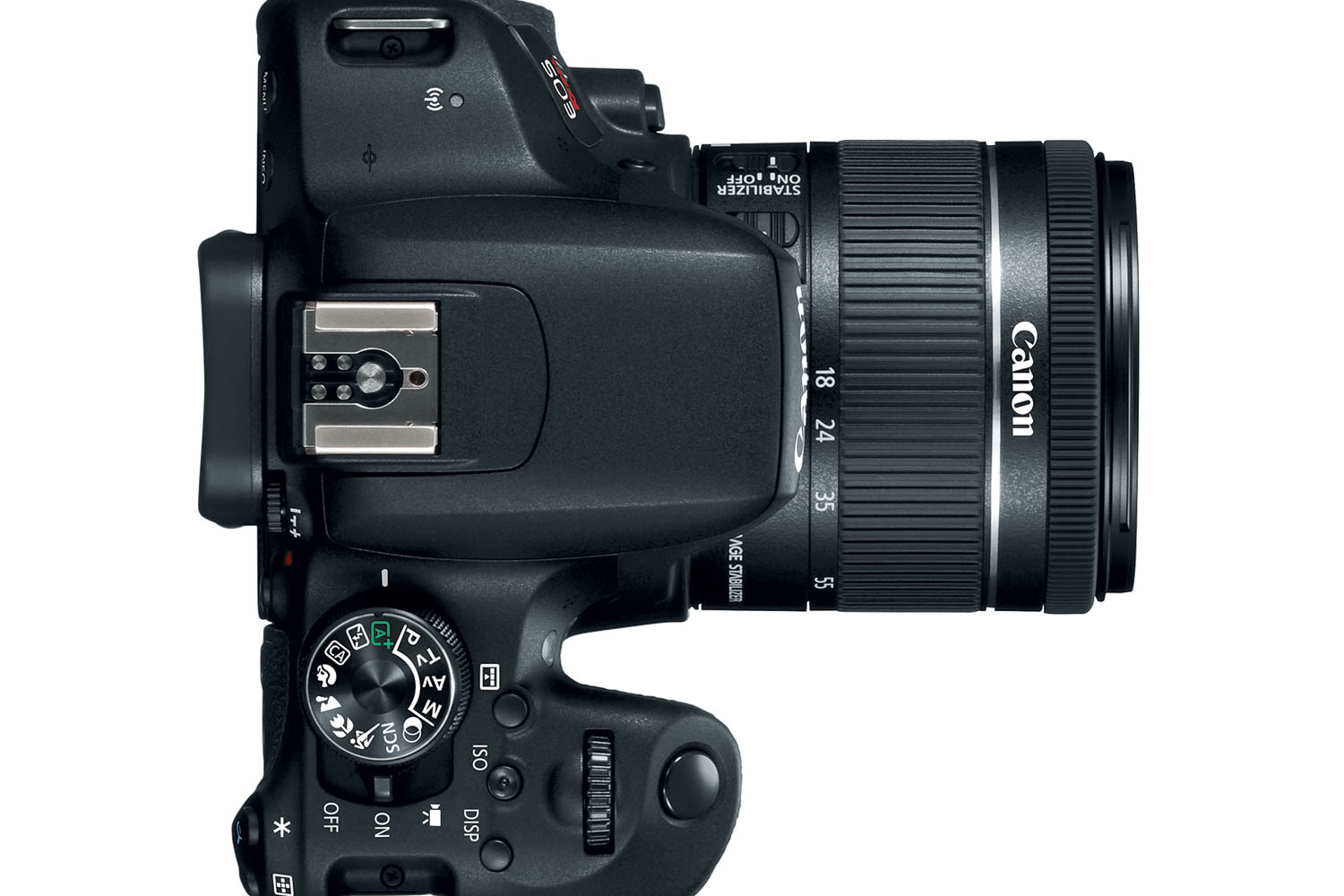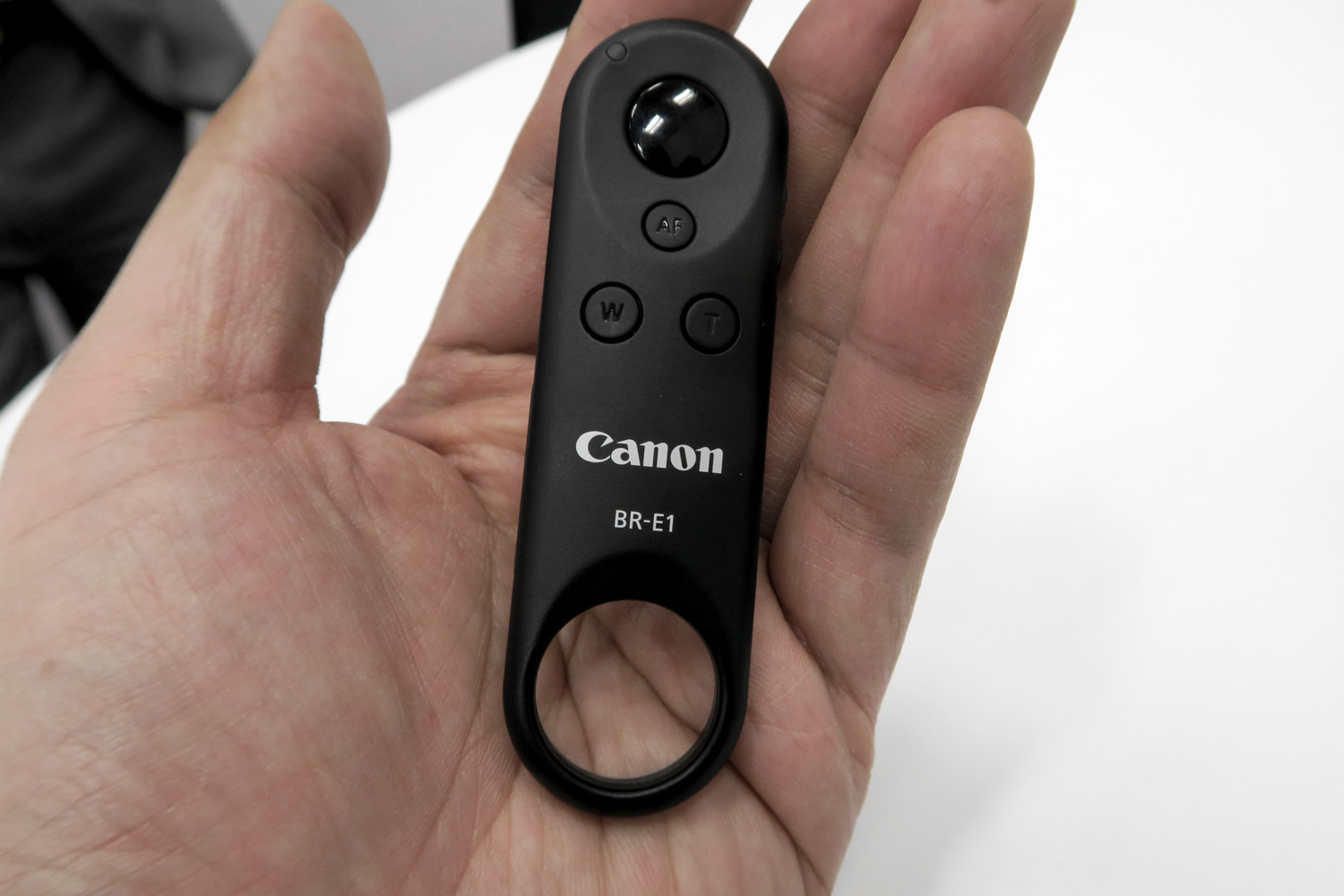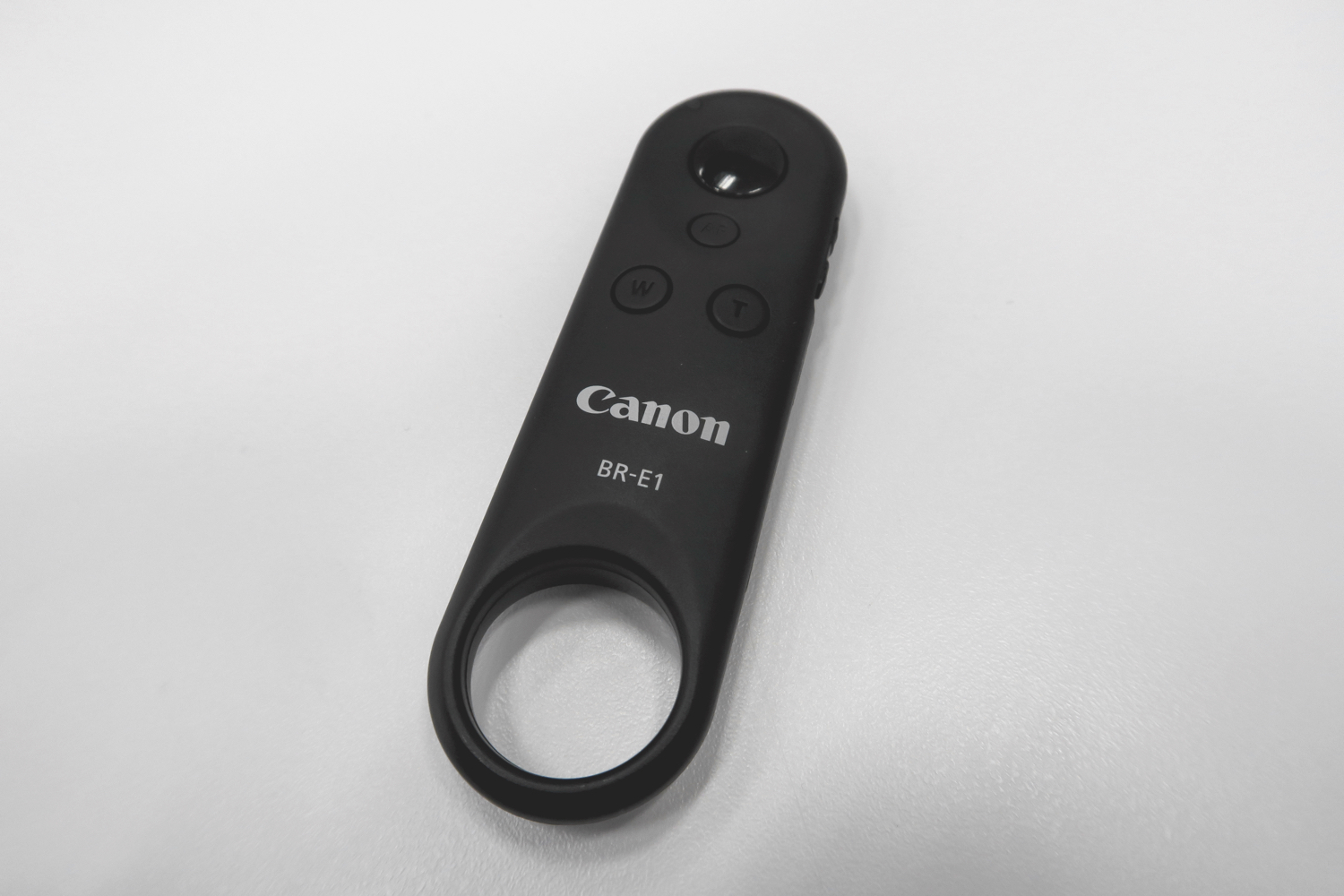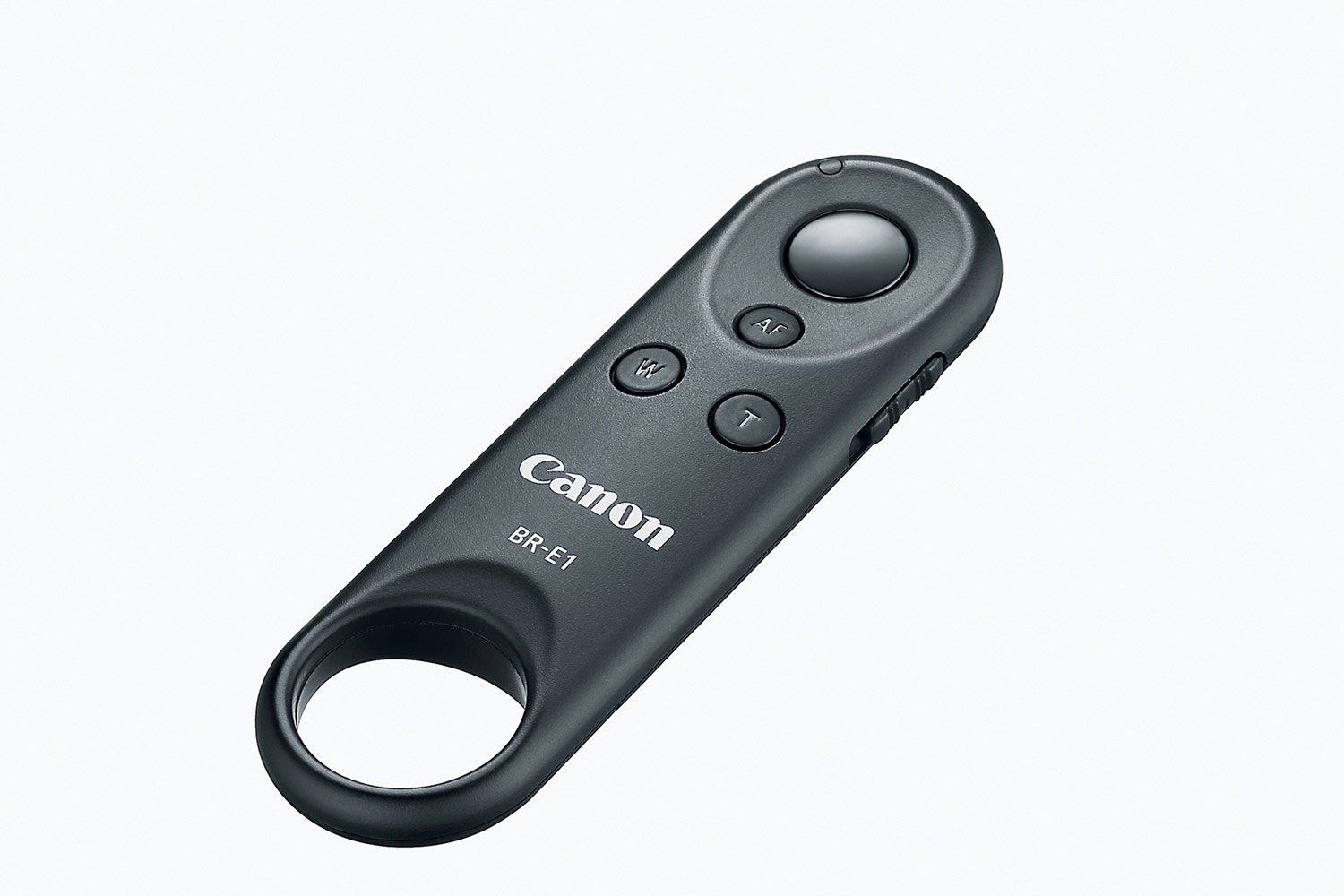Canon took the wraps off two new DSLRs today, the EOS 77D and EOS Rebel T7i. Both cameras benefit from tech trickling down from the higher-end 80D, including the 24MP APS-C sensor with Dual Pixel live view autofocus, the Digic 7 image processor, and a 45-point all cross-type AF system. While the T7i serves as a standard update over the existing T6i, the 77D represents and entirely new class of camera for Canon.
EOS 77D
Positioned between the Rebel series and the 80D, the 77D is targeting aspiring enthusiasts or beginners who want more control than a Rebel but don’t need quite the performance and durability of the 80D. That said, the camera is certainly no slouch. It shares the 80D’s 7,650-pixel RGB+IR metering sensor and anti-flicker mode that helps achieve even exposures under flickering lights, like fluorescents. It can also shoot bursts at six frames per second, just one shy of the 80D.
The 77D looks and feels similar to the 80D, although it is a bit lighter. It offers Canon’s more enthusiast-style control layout rather than the simplified, beginner-friendly layout of the Rebel series and includes a top LCD screen for viewing camera settings. The three-inch rear LCD is both articulating and touch-sensitive. Unlike the 80D, the 77D does not appear to be environmentally sealed and uses a smaller battery, the LP-E17, so advanced enthusiasts still have reason to consider the more expensive camera.
With the 77D, Canon has effectively replaced the Rebel T6s, which added a top LCD and a couple of other enthusiast-friendly features into the Rebel line. The 77D separates itself further from the T7i than the T6s did from the T6i, which should make it more attractive to its target demographic of advanced amateurs. The camera will be available in April for a price of $900 for the body, $1,049 with the new EF-S 18-55mm f/4-5.6 lS STM lens (see below), or $1,499 with the EF-S 18-135mm f/3.5-5.6 IS USM lens.
EOS Rebel T7i
The T7i is a classic Rebel in look and feel. On the inside, however, it is a surprisingly powerful machine, giving current Rebel shooters the best reason to upgrade that they’ve had in years. In addition to being the first Rebel to offer Dual Pixel AF with phase-detection, it shares many features with the 77D, including 6 frames-per-second continuous shooting, a three-inch articulating LCD screen, and Wi-Fi, NFC, and Bluetooth.
Taking feedback from beginning photographers, Canon put a refreshed user interface into the T7i that lets users see onscreen how changing settings will alter their images (the UI can be reverted to the standard version if preferred). The goal with this is to help guide photographers beyond automatic mode by making advanced exposure modes more approachable.
The Rebel T7i will also be available in April. Photographers can choose between the body only at a price of $750, with the new 18-55mm lens for $900, or with the 18-135mm for $1,299. While the T7i is a worthy upgrade from previous Rebel cameras, many Rebel users may be tempted to jump up to the 77D, given how close the two cameras are priced.
First impressions
We tried our hands on both cameras during a press preview during CES 2017. The T7i is very much in keeping with Rebels that came before. Compact and lightweight, the T7i is a user-friendly DSLR that fits nicely in the hands. Unlike higher-end DSLRs, the construction is good, but not the strongest (it has the plasticky feel that’s common with entry-level cameras). What we really like is the new graphic user interface that helps guide new users; if you are looking at buying your first DSLR, the T7i has a easy-to-follow menu system that teaches you how to make the best of the camera’s shooting modes.
The 77D is more of proper enthusiast camera than what the T6s was. It shares a lot of build qualities with the T7i, but unlike the T6s, which was more of a slightly upgraded Rebel, the 77D tries to be more like the 80D – the best of both worlds, you could say. It won’t intimidate entry-level users, but it provides them the opportunity to do a bit more without spending money on a more advanced model.

Based on our experience, even the cheapest Rebel camera can take amazingly beautiful photos if you pair it with a really good lens. If you want to up your photo game, we think skipping the kit lens and spending more on a better one is a good approach, since the T7i and 77D use the same parts as the 80D, a camera that we really love.
With that said, the 80D is only $100 more than the 77D, so you may want to consider going with that model for a bit better performance, like faster continuous shooting, better build quality, and wider ISO range. Since you can now get 80D-level specs and performance in entry-level models, we would not be surprised if Canon updates that enthusiast camera soon with trickled down tech from higher-end EOS DSLRs.
Are these cameras worthy upgrades? From a photo standpoint, absolutely. In our tests, we found the 80D capable of capturing great looking images, and we’re glad to see Canon trickle down the tech to the Rebels, instead of reusing outdated tech. If you want to get into video, however, you may be disappointed that these won’t shoot 4K. We think it’s a missed opportunity again for Canon (a leader in video cameras), as 4K would provide some future-proofing and downscaling to Full HD. However,

With that said, Canon has brought its Dual Pixel system to entry-level models, and this is a big deal for video autofocusing. Compared to the Hybrid AF system employed by previous Rebel models, Dual Pixel just works better – a highlight feature in the 80D that we’re glad to see in a Rebel. So, while you don’t have 4K, you do have a really strong AF system.
As we said, we love the 80D, and if these new cameras perform just as well, we think they’d be solid buys for new users or Rebel owner looking for an upgrade. But until we spend more time on a full review, we will withhold judgment.
A new kit lens and Bluetooth remote
Both the 77D and T7i can be kitted with a new version of Canon’s 18-55mm lens, which now features a slightly slower f/4-5.6 aperture. Despite the loss of a third-stop of light gathering capability at the wide end, most users will likely appreciate what this lens offers over its predecessor. Canon claims it is 20-percent smaller and stabilization has been improved to offer up to four stops of shake reduction. By itself, the EF-S 18-55mm f/4-5.6 IS STM will retail for $250 with availability scheduled for April.

Canon also introduced the BR-E1 Bluetooth remote, which works with both the T7i and 77D. Compared to traditional IR remotes, the BR-E1 will allow photographers to trigger the camera from anywhere within a 16-foot radius of the camera without the need for a direct line-of-sight. The new remote should also be available in April and will sell for $50. Even without the remote, users can control the new cameras over Bluetooth from the Canon Camera Connect app for iOS and Android.
In other news, Canon also issued a firmware update for its Canon Connect Station CS100 digital media hub. The CS100 is built around a one terabyte hard drive and lets users store, share, and display images and videos on their televisions over HDMI or wirelessly on mobile devices. The update adds support for non-Canon cameras, improves smartphone compatibility, and allows for playback of videos that have been edited on a computer. Click here to read more about the CS100.
Editors' Recommendations
- The Canon EOS Rebel T8i brings 4K to a $750 budget DSLR
- Canon EOS 90D vs. Canon EOS 80D: Is the upgrade worth it?
